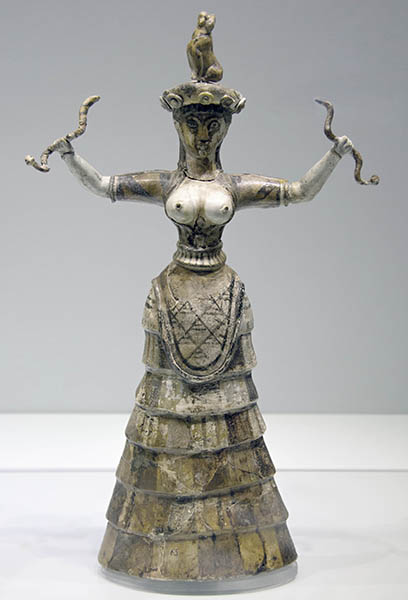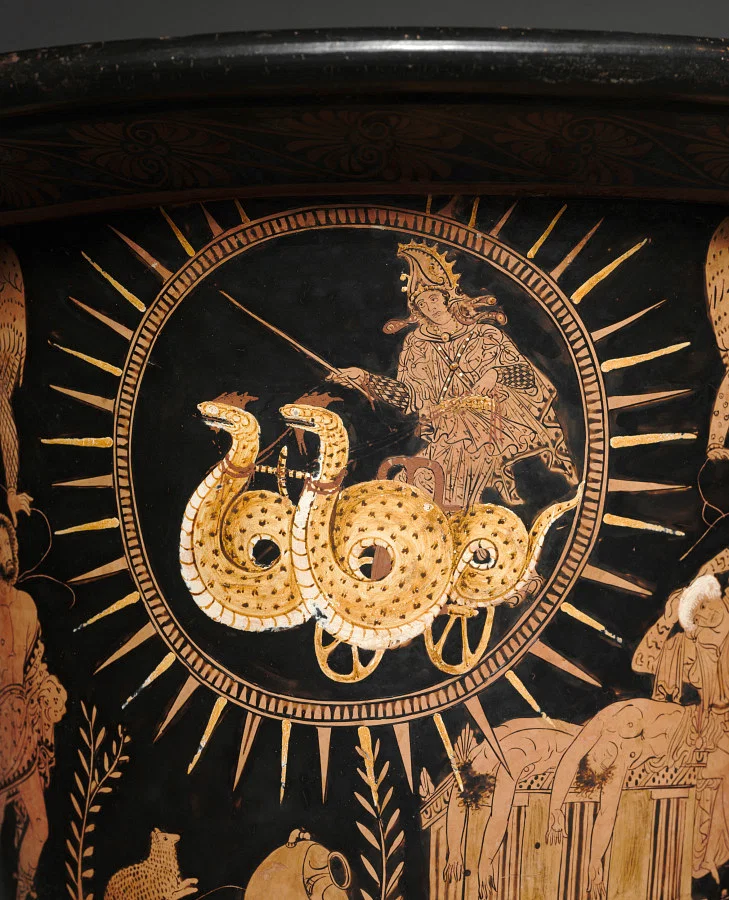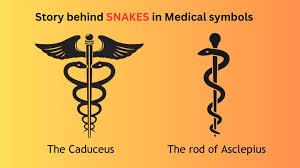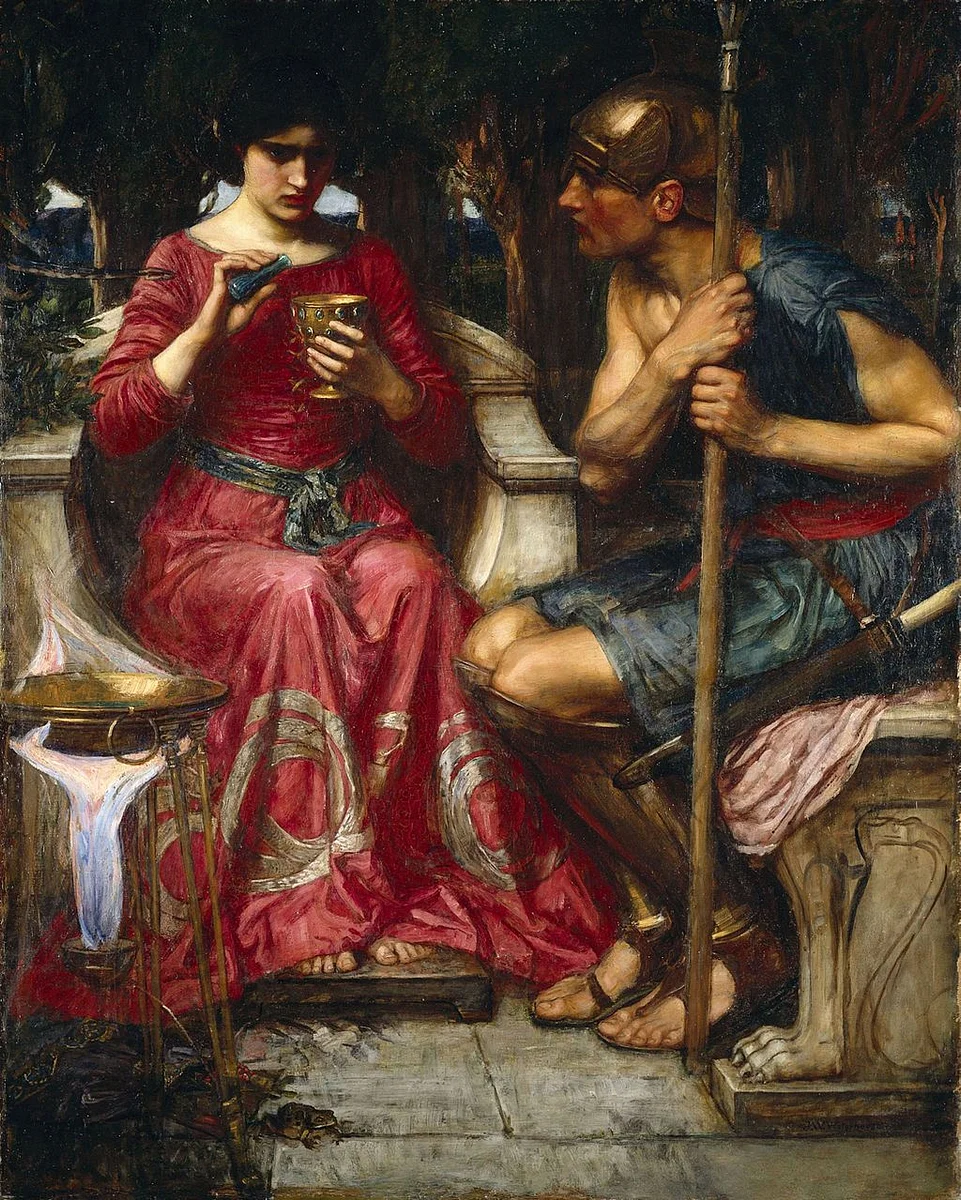Snakes in the Ancient World
What was it the ancient world revered about snakes?
There was a Pharmakon medical practice that goes back to Bronze Age Colchis (1300BCE) with Queen Medea and earlier with the Scythian/Amazonian bowhunters.
Snakes symbolize knowledge, fertility, rebirth and renewal, why?
Snakes as Knowledge Symbols
- Why: Venom based Medicine (see below) and use in revelatory temple practice was transformative, and chthonic association under the ground with the roots of the plants, snakes know what's happening with your crops.
Snakes as Fertility Symbols
- Why: Women’s health and childbirth were directly linked with serpent-venoms. Small doses or preparations could control pregnancy (contraception, abortion, or easing of childbirth pains), while venoms also helped staunch bleeding. Thus, the serpent became aligned with the womb’s power to give or withhold life, making it a natural emblem of fertility.
Snakes as Rebirth Symbols
- Why: Exposure to venom produced near-death states, followed by revival through antidotes (often from another’s body fluids). This cycle of poison → collapse → antidote → recovery became a ritual death and rebirth pattern, experienced directly in the mystery rite. Hence, snakes embodied the rhythm of mortality, immunity, and renewal.
Snakes as Underworld Symbols
- Why: Venomous crisis was a confrontation with death and paralysis—a descent into the underworld. The initiate’s visionary state (ego death, entheogenic revelation) was guided and reversed only by antidote. Because snakes dwell in the earth and bring mortals to the brink of Hades before release, they were seen as chthonic guides bridging this world and the underworld.
Scythian and Amazonian bowhunters
When: Before 1500BCEThe legend of the Amazons, the formidable female bowhunters, originates from ancient Greek mythology and was inspired by real-life Scythian warrior women of the Eurasian steppes. Amazons first being mentioned in the epic poems of Homer around the 8th century BCE.
- Arrow Poisons used venoms for defense.
- The bowhunters put it in their hair, and wiped their arrows across their hair before firing upon a foe. The result was paralysis.
- Midwifery and Women's health benefitted from venoms
- Stop bleeding from childbirth
- Alleviate cramps
- Contraception or Abortion to control for pregnancy (prevent, undo, or allow)
- Use in potions / medicines
- Venom Antidote - Cure those who've been bitten
- Those with low dose exposure build an antibody immunity, and are able to provide their fluids to others without that immunity, in order to cure them of venom poisoning.
- Mystical Experience
- Near Death from the Venom induces entheogenic revelation or ego death type of experience, guidance during the rite makes it repeatable. The venom dote must be followed by a body-fluid antidote. This journey is described as visiting the underworld, to then be resurrected or reborn. This mystical tradition was a rite of initiation for many, and influences later religions (see below), including Christianity with their death and resurrection mechanics, especially in the early Christian mystery cults when Pharmakon was still prevalant.
Minoan
When: 1650–1550 BCEThe Minoan Snake Goddess refers to a famous figurine from Minoan Crete (c. 1600 BCE) depicting a woman with snakes in her hands, bare breasts, and a flounced skirt, representing fertility and a connection to wildlife. While possibly a goddess or priestess, her exact role is uncertain due to the undeciphered Minoan language, but her bare breasts were likely a fashion of the time, and snakes symbolize rebirth and renewal.
Snakes were significant in Minoan culture and were associated with fertility, rebirth, and the underworld.


Medea's Colchis
When: Before 1300BCEMedea was first mentioned by Hesiod's Theogony, which is dated to around 700 BCE. This brief reference names her as the daughter of King Aeëtes and a wife of Jason.
Medea, in her Colchian setting as priestess and royal consort, is inseparably bound to venoms and serpents: she is daughter of the serpent-guardian tradition, mistress of pharmaka, and heir to Echidnaic lore. In Colchis—the land of the snake-haunted fleece — she wields vipers’ venoms as both weapon and cure, preparing arrow-poisons for warriors, draughts to control women’s fertility, and antidotes to preserve chosen heroes. The snake is her emblem not merely of danger but of knowledge, fertility, and underworld passage; through her hands venom becomes both the terror of paralysis and the key to rebirth. As queen-priestess, she stands as the archetype of the drakaina—guardian of hidden remedies and keeper of chthonic power.
During her travels, After Athens, Medea travelled to Italy, where she taught the Marrubians (people from Central Italy) snake charming and the healing arts.
Ancient descriptions of potions were simply medicine, designed to invoke a mental state or cure some ailment. Healing or Poison, or Visionary. They were a tool to manipulate the human physiology and consciousness.

Medea on Her Chariot
Cleveland Museum of Art (Public Domain)](https://www.worldhistory.org/image/16884/medea-on-her-chariot/)
Medea's priestesses included the Medusae priesteses, and the Medusa were her personal guard. When you consider that there was an older tradition of venom in hair, with arrow poisons to freeze their foe by shooting them with arrows. You can see the legend of the Medusa when transformed into Myth. It wasn't literal snakes in hair, and it wasn't turning the victim to stone. It was the combat use of medicine, using venoms and paralysis to overcome an enemy, making a formidable female warrior guard.
Pythia
When: approximately the 8th century BCE until the oracle's closure by Roman Emperor Theodosius I around 393 CEThe oracular priestess in Delphi continues the snake/venom traditions with the word Pythia directly in her title.
Fumigations were also used in temple settings to relax the mind to do the oracular work, and here the natural ethylene/methylene from the earth is shown being used. These fumigations were combined with Pharmakon depending on the rite being performed.

Eleusinian Mysteries
Snakes connect to the Eleusinian Mysteries through symbols of death, rebirth, and underworld wisdom, representing the cycle of life and death central to the myth of Persephone and Demeter. The hero Triptolemus, an initiate of the Mysteries, rode a winged chariot drawn by snakes, symbolizing his connection to mystical transformation and the cycle of seasons, which were a key focus of the rites.- Triptolemus's Chariot: Triptolemus, a key figure in the mysteries who teaches humanity agriculture, is famously depicted riding a winged, snake-drawn chariot. This signifies his role in disseminating Demeter's gifts of life and his connection to the divine powers of transformation and cycles.
- Demeter's Familiar: Demeter, the goddess at the heart of the Eleusinian Mysteries, is associated with snakes as one of her symbols. This reinforces the connection between the goddess of fertility and the earth's renewal.
Medicine
When: 600BCE-400CEAsclepius healing cult
The way that venoms were applied, were through thin tissues. The stomach would destroy the venom's effects.
The Alabastron plunger with the coiled snakes symbolizes this method of delivery into human orifices.

Asclepius and the Gorgon's Blood: The god of medicine, Asclepius, whose symbol is also a snake entwined staff (the caduceus), received blood from the Gorgon Medusa from Athena. The blood from her right vein had healing properties and could raise the dead, connecting snakes to the powerful force of salvation and life.
The sanctuaries ceased to function after Roman Emperor Theodosius II decreed the closure of all pagan sites in 426 CE
Hippocrates
Hippocrates and the Corpus Hippocraticum (the collection of medical writings attributed to him) span from roughly 450 BC to the mid-fourth century BC, with some evidence suggesting older strata of material exist within the Corpus. Hippocrates himself lived around 460–370 BC, but the writings were a collective effort by many authors over several centuries, with the majority of them dating to the late 5th and early 4th centuries BC.
Venoms in ancient times were potent medicine, for a variety of ailments.
The way that venoms were applied in ancient times, were through thin tissues. The stomach would destroy the venom's effects.
The Alabastron plunger with the coiled snakes symbolizes this method of venom delivery into human orifices, the most potent and revolutionary medicine of the ancient world.
Serpent in the Garden of Eden
This character was responsible for handing out knowledge. Snakes as we have covered already, represented knowledge in the ancient world, due to the amazing healing, mystical death and resurrection, and combat properties.
Additionally, because of reverence for snakes and their amazing properties, temple guardians were also called serpents generally, and specially Pythia (Python), Drakon (Dragon), or Ophis (serpent). This was a role in temple systems, associated with guardian of relics and secrets. Often mythologized, dragons 🐉 in the popular consciousness, just like Medusa was mythologized.
What type of knowledge was being given in that paradise by the Ophis (serpent)? Knowledge of death and resurrection... using the venoms. It was an initiation, to educate Adam's soul
See also Garden of Eden Breakdown
Paul the Apostle
When: 20-70CE
Here we see evidence of the snake venom tradition enduring into the early Christian practice. Paul is immune not by some fantastical fairy tale supernatural effect, but by the more easily explained natural immunity to the venoms built over time. Something that any human can achieve, Paul was not special in this trick he demonstrates. Following in the tradition of previous healers like Medea.
3 συστρέψαντος δὲ τοῦ Παύλου φρυγάνων τι πλῆθος καὶ ἐπιθέντος ἐπὶ τὴν πυράν, ἔχιδνα ἀπὸ τῆς θέρμης ἐξελθοῦσα καθῆψεν τῆς χειρὸς αὐτοῦ. 4 ὡς δὲ εἶδον οἱ βάρβαροι κρεμάμενον τὸ θηρίον ἐκ τῆς χειρὸς αὐτοῦ, πρὸς ἀλλήλους ἔλεγον Πάντως φονεύς ἐστιν ὁ ἄνθρωπος οὗτος, ὃν διασωθέντα ἐκ τῆς θαλάσσης ἡ Δίκη ζῆν οὐκ εἴασεν. 5 ὁ μὲν οὖν ἀποτινάξας τὸ θηρίον εἰς τὸ πῦρ ἔπαθεν οὐδὲν κακόν· 6 οἱ δὲ προσεδόκων αὐτὸν μέλλειν πίμπρασθαι ἢ καταπίπτειν ἄφνω νεκρόν. ἐπὶ πολὺ δὲ αὐτῶν προσδοκώντων καὶ θεωρούντων μηδὲν ἄτοπον εἰς αὐτὸν γινόμενον, μεταβαλόμενοι ἔλεγον αὐτὸν εἶναι θεόν.
Acts 28 - New Living Translation
3 As Paul gathered an armful of sticks and was laying them on the fire, a poisonous snake, driven out by the heat, bit him on the hand. 4 The people of the island saw it hanging from his hand and said to each other, “A murderer, no doubt! Though he escaped the sea, justice will not permit him to live.” 5 But Paul shook off the snake into the fire and was unharmed. 6 The people waited for him to swell up or suddenly drop dead. But when they had waited a long time and saw that he wasn’t harmed, they changed their minds and decided he was a god.
It tests Paul’s immunity to snake venom, which he built by participating in mystery rites involving venoms previously applied/christed on him (chrio / χρίω, doton / δοτόν) and their antidotes (antichrio / ἀντίχρισμα, antidoton / ἀντίδοτον). Literally.
- echidna (ἔχιδνα) - viper. Derived from the root ἔχις (echis), meaning snake or serpent
- in mystery contexts, this is the virgin priestess, women from ancient oracular colleges. (However, here, it appears to be an actual snake biting Paul)
- therion (θηρίον) - creature, the beast. Also the name for Theriac death inducer potion.
- zēn (ζῆν) - to live. From ζω- (to live), means life.
- theon (θεόν) - like a god, immortal (in this case, not able to be harmed)
- doton (δοτόν) - That which is given.
- antidoton (ἀντίδοτον) - antidote or counteragent
- anti (ἀντί) - Against, opposite.
- doton (δοτόν) - That which is given.
- pharmakon (φάρμακον) - A term that can mean both "poison" and "medicine," emphasizing the dual nature of substances depending on their use.
- antipharmakon (ἀντίφάρμακον) - A counterpoison or remedy.
- chrio (χρίω) - To anoint or smear, often with oil, venom, or medicine. The term Christos (Χριστός, the anointed one) derives from χρίω, a title for a person who annoints with pharmaka, often in mystery cults.
- antichrio (ἀντίχρισμα) - "against the anointing," often referring to a counteragent or antidote.
